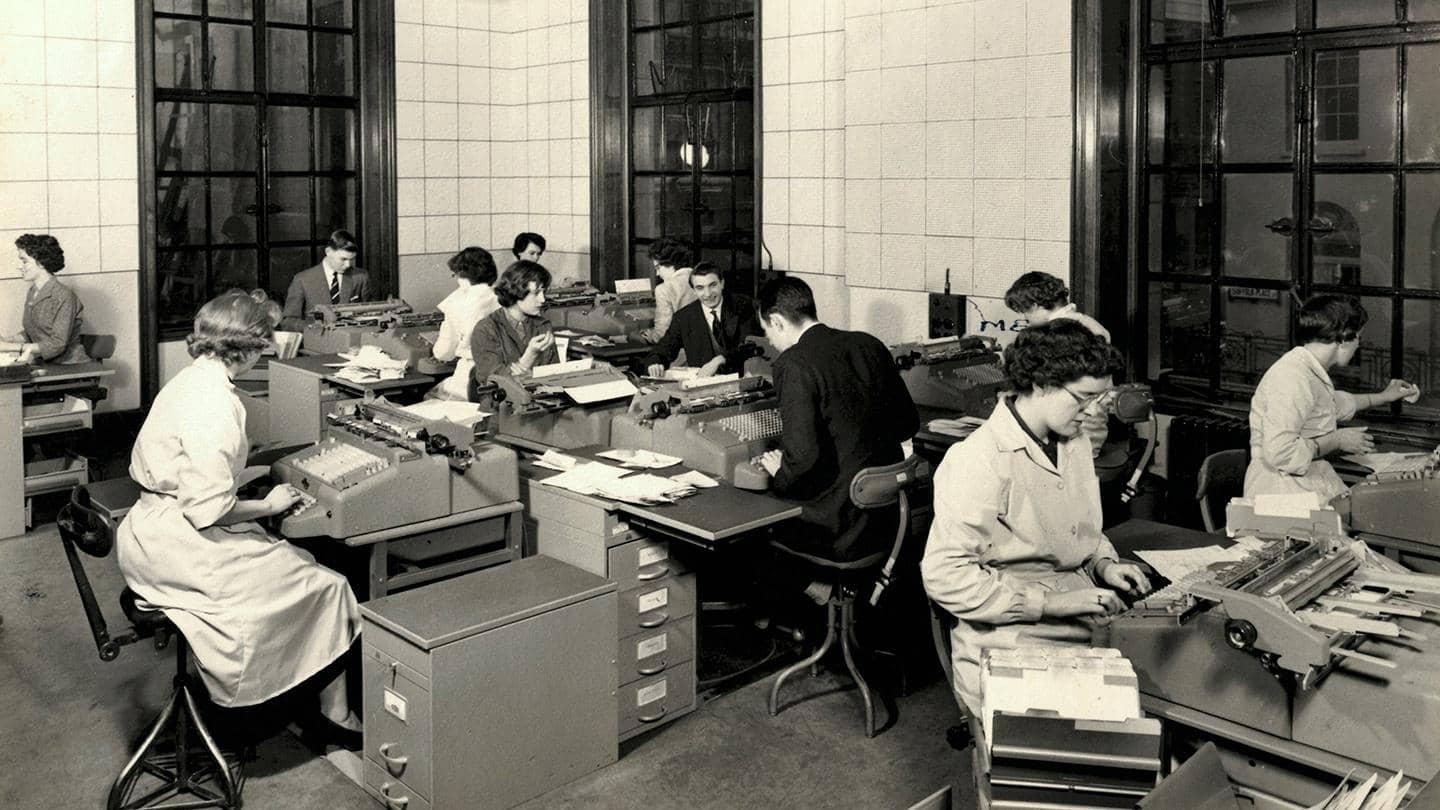
History
Hidden Histories: women in the 60s
In the second in our Women’s History Month series, in which we uncover the untold stories of women at Barclays, we take a look at the role women in banking played in the technological revolution in the 60s – from working as machine operators to developing the first training manuals.
Women were employed in a variety of computing roles at Barclays after its first computer centre opened on Drummond Street, London, in the early 1960s. One such role was working as a machine operator, feeding information into terminals at bank branches, which was then transmitted to the computer centre. Initially, many of the programmers and operators were women in their early twenties. To prepare for the role, colleagues completed a three-week training course at the EMI factory in Middlesex, UK.
Pictured above, the machine room at the Barclays Pall Mall East branch was predominantly staffed by women. Here, colleagues use the latest NCR accounting machines – the height of post-war mechanisation.
Audrey Stone
A leading woman at Barclays’ computer centre, Audrey Stone (pictured below), developed the training manuals for the Emidec and IBM models. The Emidec 1100 was the first computer introduced into the bank in 1959, marking the start of the shift to an electronic bookkeeping system. Five years later, the IBM 360 model was purchased for every Barclays branch in the City of London. Information could be shared at speed as the IBMs linked directly to the bank’s second computer centre in Lombard Street.
Audrey’s hard work paid off and she was promoted to Assistant Manager at the Management Services Department. She was responsible for maintaining strong communication between the colleagues managing the technical processes and those in the branches and head offices.

Audrey Stone working at the first Barclays computer centre on Drummond Street
Female communications staff
A team of communications staff made up of women worked alongside the computing team, taking responsibility for winding up the computer paper tape readers and placing them onto spikes. Here, Barclays’ female employees are pictured working with the Pegasus computer, purchased by Martins Bank in 1961, which merged with Barclays in 1969. In the same year, Martins Bank had 3,004 women employees, almost equal to the number of men at the bank.

Barclays women working on the Pegasus computer in the late 1960s